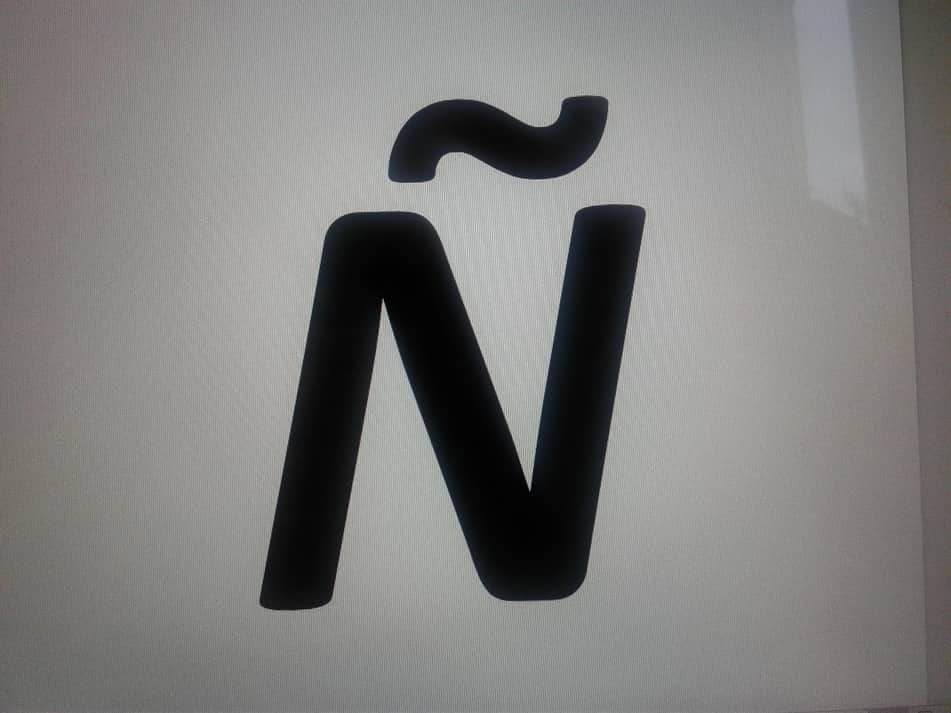
When I first started learning Spanish, I was confused why there was a squiggle or squiggly dash over the letter N. After some research on this topic, I decided to write a helpful post to explain the squiggle or squiggly dash over the letter N in Spanish.
What is the squiggle over the letter N in Spanish? The squiggle over the letter Ñ in Spanish is called a tilde (also referred to as a virgulilla in Spanish). Ñ is a letter of the alphabet formed by placing a tilde above an uppercase or lowercase N.
But there’s more to simply placing the squiggly dash above an N. We don’t use it every time we have a word with the letter N in Spanish. So when you use a regular N or the special Ñ, it is important to understand the difference. Below, we take a deep dive into the letter Ñ’s history, pronunciation, provide examples and discuss the cultural significance.
Detailed Information on the Letter Ñ and How to Use It
As we discussed above, a squiggly dash or a squiggle above an “N” is called a tilde. The tilde is used to distinguish an “N “from an “Ñ”. In fact, this tilde above the N makes the letter “Ñ” a separate letter in the Spanish alphabet.
But where did the letter Ñ come from and why do we use it today?
History of the Letter Ñ
Originally, the old Spanish language used words with two consecutive letters, such as nn. During the 12th century, Spanish scribes (whose job was to copy documents by hand) started using tildes above letters to indicate that the letter was doubled (scribes used ñ for nn and ã for aa). Over time, the popularity for using tildes above different letters faded, except the letter Ñ survived.
Here is a link to the medieval scribe found on Wikipedia showing the numerous scribal abbreviations. Scribes made these abbreviations to save time and writing space on parchment (medieval paper), which was expensive. You can see from the parchment photo found on Wikipedia that the scribes abbreviated several letters and words.
The changes made by the medieval scribes ultimately resulted in a new letter to the Spanish alphabet. The letter Ñ comes after N in the Spanish alphabet. When you need to pronounce the letter Ñ, you say eñe (pronounced eh-nyeh). Below is more information on how to pronounce the letter Ñ in different words.
Pronunciation of the Letter Ñ
The letter Ñ has a different pronunciation than the letter N. The squiggly dash or tilde above the letter Ñ indicates a different pronunciation, also called a palatal “n”. A palatal “n” is the sound made when you put your tongue on the roof of your mouth to make the sound.
Here is a link to Wikipedia that will give you a quick pronunciation of the letter Ñ (In the Wikipedia article, click on the link in the first sentence at the top of the page for “pronunciation”. There is a little speaker icon immediately to the left of the word “pronunciation”.).
You can try to make the sound by using some of the words we commonly use in English. In English, the pronunciation of the letter Ñ is similar to the sound of “ny”, which is used in the following words below:
- Canyon
- Lasagna
- Onion
- Union
Here are some examples in Spanish for how to pronounce the letter Ñ in a word:
- Mañana – pronounced as “man-YAN-a”
- Niña – pronounced as “NEEN-ya”
- Niño – pronounced as “NEEN-yo”
If you want more practice pronouncing the letter Ñ, here is a link to a helpful video on YouTube.
Examples of the Letter Ñ Used in Spanish Language
- Año (“Year”)
- Mañana – this word translates to “tomorrow”, “morning” or “later”
- España (“Spain”)
- Señor (“Sir” or “Mister”)
- Señora (“Mrs.”)
- Señorita (“Miss”)
- Baño (“Bathroom”)
- Niño (“Boy”)
- Niña (“Girl”)
- Sueño (“Dream”)
Cultural Significance of the Letter Ñ to Spanish Language
Throughout the years, the letter Ñ has grown to represent a sense of pride for the Spanish language community.
Organizations like Instituto Cervantes and the National Association of Hispanic Journalists have adopted the letter Ñ. Spanish-language CNN has changed its logo to place the tilde “~” above both NN’s. And as a fun nickname, the Spanish men’s national basketball team is referred to as “ÑBA”, which is similar to the USA men’s basketball league of the National Basketball Association (NBA).
In the early 1990’s, a European community report recommended the reversal of a regulation that required the sale of all computer products in Spain to support the characters of the Spanish language and writing system. This would have allowed Spanish keyboards and other standard products to not have the letter Ñ displayed. The reaction from the Spanish community was strongly against the reversal of the regulation.
How to Type the Squiggly Dash Above the Letter N
Now that we understand the use of the letter Ñ, how do we type “Ñ” and “ñ” on our computers, smartphones, and tablets?
Spanish and Latin American keyboards have their own separate keys for “Ñ” and “ñ”. In Modern Spanish, there are no other letters that use a tilde besides the “Ñ” and “ñ”. To make things easy for Spanish language keyboards, both the “Ñ” and “ñ” were assigned to a single mechanical typebar, which abandoned a key that was deemed insignificant, usually the 1⁄2—1⁄4 key.
Below are tips and instructions that apply only to English-language keyboards, smartphones, and tablets.
If you think you may forget these tips, make a cheat sheet next to your computer or create a shortcut on your device. Once you go through these steps, you should have no trouble typing the letter ñ or Ñ.
On a Mac Computer
On an Apple Mac computer, typing the letter ñ or Ñ is quick and easy. Simply press and hold the alt/option key, then type the letter “n”. A tilde “˜” should appear. Next, type a lowercase or uppercase “n”. The result will be either an ñ or Ñ.
Here it is again for quick reference:
- Alt/Option + n, then n again = ñ
On a PC with Microsoft Windows
On a PC with Microsoft Office for Windows, press “Ctrl” and “~” at the same time. Then, press the letter n to create ñ.
Here it is again for quick reference:
- Press Ctrl + ~, then the letter n (Ctrl + ~ + n = ñ)
Another way I have found to create the letter ñ is to also include “Shift” when you are pressing Ctrl + ~. See below for a quick reference:
- Press Ctrl + Shift + ~, then the letter n (Ctrl + Shift + ~ + n = ñ)
On an iOS device (i.e., iPhone, iPad, etc.)
Once again, the iOS system for iPhones and iPads makes typing the letters ñ or Ñ super easy and intuitive. I was able to quickly create these symbols on my wife’s iPhone and my iPad.
First, pull up the keyboard on your device whether it be under iMessage or another app on your iOS device. Then, press and hold “N”. After a brief moment, a bubble should appear above the “n”. Once the bubble appears, slide your finger up to the ñ.
Be sure to slide your finger up to the symbol. If you take your finger off of the keyboard, then the ñ symbol will disappear.
Also, if you want a Capital Ñ, be sure that the Capital letter Upper Arrow on the keyboard has a white background with a black arrow pointing up. This will create the Capital Ñ for you by following the steps above.
On an Android device
This time, Android devices also make it super easy and intuitive for typing the letters ñ or Ñ.
First, pull up the keyboard on your Android device, such as your Message app for texts. Then, press and hold “N”. After a brief moment, a bubble should appear above the “n”. Once the bubble appears, slide your finger up to the ñ.
Just like on the iPhone or iPad, be sure to slide your finger up to the symbol. If you take your finger off of the keyboard, then the ñ symbol will disappear.
And if you want a Capital Ñ, be sure that the Capital letter Upper Arrow on the keyboard has a gray background with the arrow pointing up outlined in blue (FYI – this is what appears on my Samsung Galaxy). This will create the Capital Ñ for you by following the steps above.
Related Questions
Is a squiggle used above an N in other languages besides Spanish? Other languages that use the letter Ñ in some form are Galician, Asturian, Basque, Chavacano, some Phillippine languages (especially Filipino and Visayan), Chamorro, Guarani, Quechua, Mapudungun, Mandinka, and Tetum alphabets. For a detailed explanation, visit Wikipedia here.
Why is a tilde also referred to as a virgulilla in Spanish? In some instances, Spanish language users have adopted the word virgulilla to refer to the tilde and the “~” is not even considered an accent mark in Spanish, but instead considered a part of the letter Ñ. Further, there is debate on internet forums whether the term tilde or virgulilla are the proper terms to properly describe the “~” in the Spanish language.
